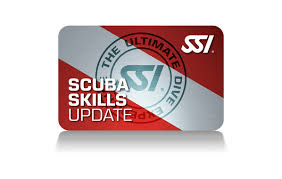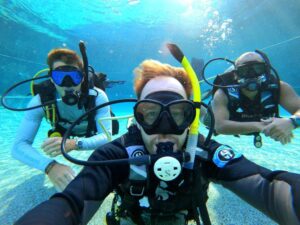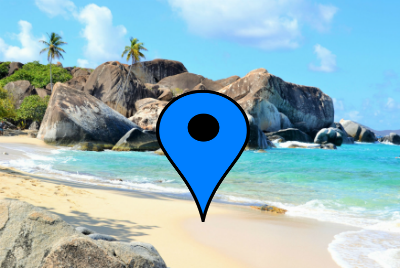
Been a while since your last dive?
We know that Life gets in the way. And that you definitely don’t get to dive as much you would like too!
With time away from the water, your scuba skills will deteriorate and that’s normal. Our professional staff want you to feel safe and comfortable underwater so that you can focus on the beauty of your surroundings. As professional Dive Instructors, we can set you up with a Scuba Refresher prior to your dive trips to get you warmed up and relaxed in the water again.
Back in the days when I was living in the islands and working as a Captain and Scuba Instructor, I figured that 90% of the divers who ask to do a refresher don’t really need to do one, and 90% of the divers who refuse to do a refresher really do need one! When I haven’t been in the water for a while, I like to jump in and double check my buoyancy, equipment, and get comfortable again. I have been diving for 27 years and 25 of that as a professional. For me, being comfortable with my gear setup, wetsuit fit and dive conditions are more than just good ideas – they are essential to my safety. I’m a big fan of my safety!

At Dive BVI, we think of a refresher in a couple of different ways. We offer an Oral Refresher where you’ll go over your gear configuration, weight selection, hand signals and dive protocols before a trip heads out. This is for those divers that want to reinforce their knowledge and make sure they understand how it all works before jumping in. We also offer a full Scuba Refresher. This is a program where divers get the assistance and supervision of an Instructor in the pool while they review the basic scuba skills. It will also include a thorough review of equipment usage and a knowledge review session.
Both of these options are available for our guests with prior notice. As we strive to follow the tenets of the SSI Responsible Diver Code, we also want our guests to be comfortable and safe underwater. By practicing your skills in a controlled environment, and having a Dive Professional guiding you, you will regain that confidence and ability to handle situations that may arise while underwater in a calm and collected manner.
Contact us today and let’s get you set up for success when you arrive!
Safe Dives,
Jeff McNutt
SSI Instructor Certifier

Getting Here!
With immaculate beaches, great diving, perfect sailing, and more, Virgin Gorda offers the perfect getaway among ‘Nature’s Little Secrets’; even better, you won’t find large throngs of tourists because getting here is a bit more adventurous than the usual group of tourists want to sort out. We’re just fine with that! Please see below for some travel information for BVI.
Please remember that every person returning to the USA needs a valid passport for entry. Check out the following information and let us know if you have questions.
From San Juan, Puerto Rico / Airport Code – SJU:
San Juan, Puerto Rico is the most direct way to the BVI. A number of airlines and charters connect there (Cape Air, Silver Airways, Tradewinds Aviation, etc). There are Private Air Charters available with Fly BVI and Island Birds.
From St. Thomas, USVI / Airport Code – STT:
St. Thomas departures are available via ferries into BVI as well as flights from the St. Thomas airport. Check out BVI Ferry Schedule for more info. Please plan on arriving to the St. Thomas airport at least 3 hours before your scheduled departure. When you coming into Charlotte Amalie by ferry, you will clear in to US Customs and do it again at the airport.
There are also air services from St. Martin/Sint Maarten and Anguilla for our guests coming over from Europe.
